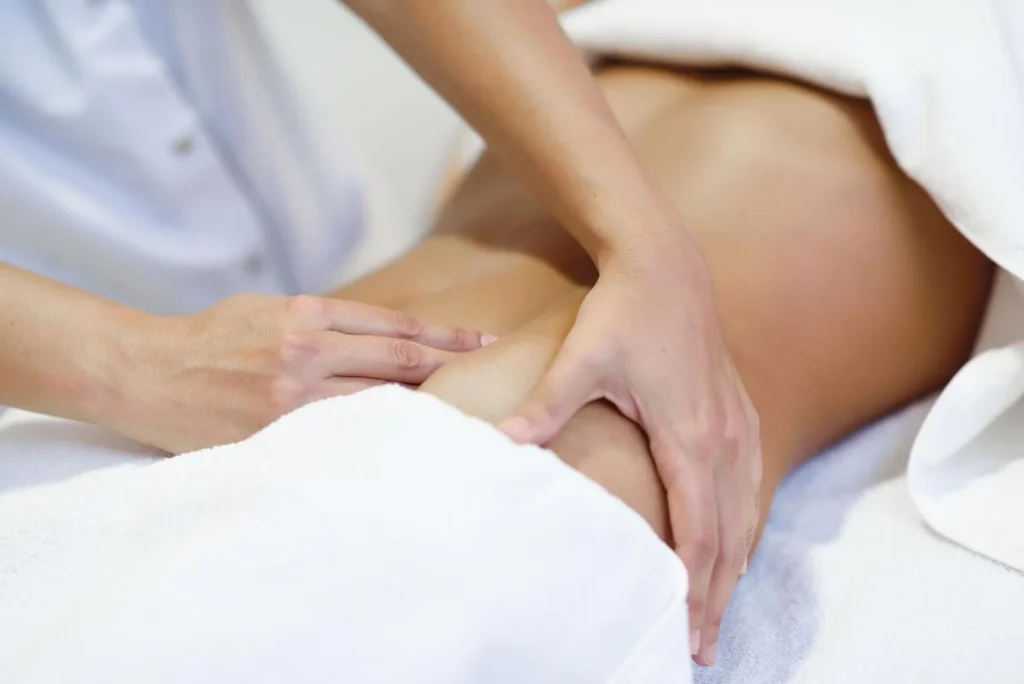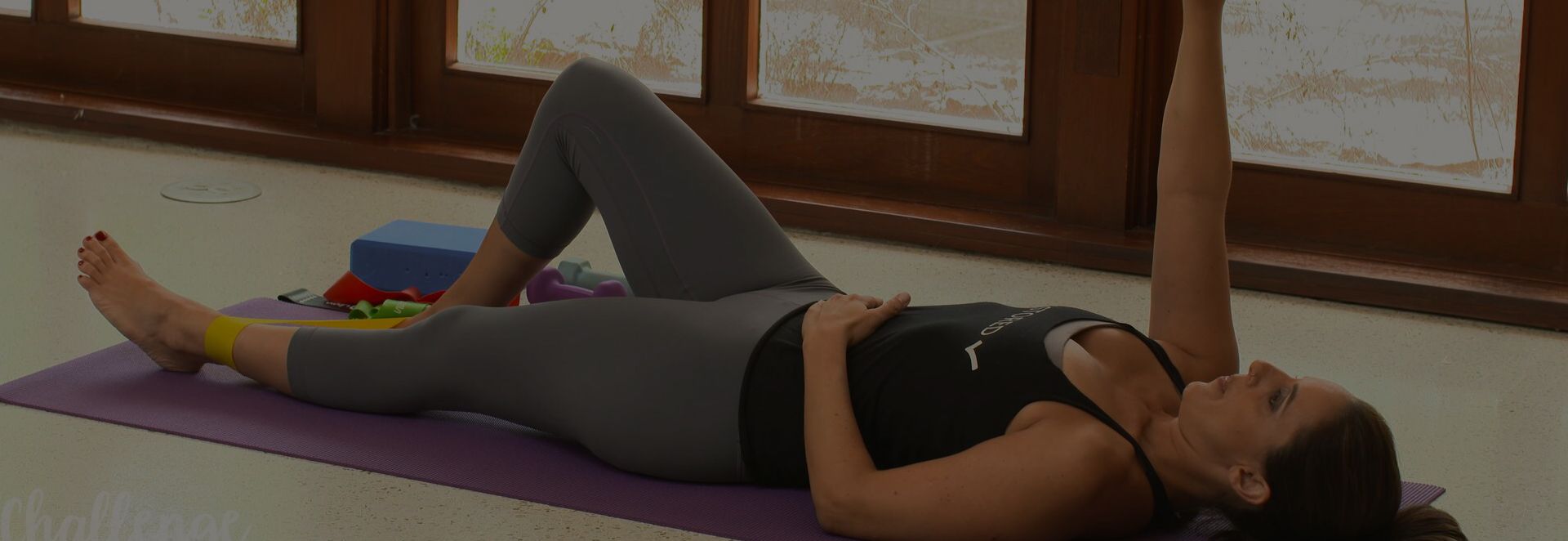Resources
- Finding Relief from Pain During Sex: Pelvic Floor Exercises That Work
- The Connection Between Exercise and Bloating: What Every Professional (and Their Clients) Need to Know
- How to Strengthen Pelvic Floor Safely
- Pelvic Floor Exercises for Constipation: Awareness, Movement, and Nervous System Relief
- High-Tone Pelvic Floor Dysfunction: Symptoms, Causes & Relief Tips
- How Menopause Affects the Pelvic Floor: Symptoms, Support & Hormonal Impact
- Tailbone Wagging for Tailbone Pain Relief and Pelvic Floor Mobility
- The Power of Tremoring: How Tension Release Exercises Support Your Nervous System
- Pelvic Floor Postpartum Exercises for Faster Recovery
- Navigating Coccyx Pain in Pregnancy: A Trimester-by-Trimester Guide
- Understanding Coccyx Pain: Symptoms, Causes, Healing and Prevention
- Pilates and Pelvic Floor Dysfunction: Is It the Solution You’re Seeking?
- 5 Pilates Pelvic Floor Exercises You Don’t Want to Leave Out
- Does Pilates Strengthen Pelvic Floor Muscles? A Comprehensive Guide
- Hypermobility and Pelvic Floor Health: What You Need to Know
- The Foot to Pelvic Floor Connection: A Whole-Body Approach to Movement and Health
- Understanding Pelvic Floor Pain After Running: Causes and Solutions for Professionals
- Top 5 Exercises to Strengthen the Pelvic Floor
- Do Squats Strengthen Pelvic Floor Muscles? Insights for Movement Professionals
- How Pelvic Floor Health Is Related to the Process of Moving from Arousal to Orgasm
- 5 Things I Wish People Knew About Your Pelvic Floor & Orgasm
- Pelvic Floor Tension: Everything You Need to Know
- How Running and Pelvic Floor Health Are Interconnected: What Every Runner Should Know
- Does Running Strengthen Pelvic Floor Muscles? Myths vs. Facts
- Understanding Urine Leakage Causes: Why It Happens and How to Manage It
- How to Strengthen Your Pelvic Floor: The Ultimate Guide
- Strengthening and Restorative Yoga Poses for Full Body Health
- Understanding Queefing: Causes, Symptoms, and Simple Prevention Tips
- How Do You Know if You Have a Weak Pelvic Floor
- What Does Pelvic Floor Pain Feel Like?
- How Can I Strengthen My Pelvic Floor Without Kegels?
- Pelvic Floor Stretches | 5 Quick Ways To Relax Your Pelvis
- Pelvic Floor Specialist | Finding Help To Heal Your Pelvis
- Is Pelvic Floor Repair Major Surgery? | Pelvic Health Guide
- Pelvic Floor Exercise
- How to Strengthen Pelvic Floor
- Pelvic Floor Therapy | Improving Your Pelvic Health
Resources
- Finding Relief from Pain During Sex: Pelvic Floor Exercises That Work
- The Connection Between Exercise and Bloating: What Every Professional (and Their Clients) Need to Know
- How to Strengthen Pelvic Floor Safely
- Pelvic Floor Exercises for Constipation: Awareness, Movement, and Nervous System Relief
- High-Tone Pelvic Floor Dysfunction: Symptoms, Causes & Relief Tips
- How Menopause Affects the Pelvic Floor: Symptoms, Support & Hormonal Impact
- Tailbone Wagging for Tailbone Pain Relief and Pelvic Floor Mobility
- The Power of Tremoring: How Tension Release Exercises Support Your Nervous System
- Pelvic Floor Postpartum Exercises for Faster Recovery
- Navigating Coccyx Pain in Pregnancy: A Trimester-by-Trimester Guide
- Understanding Coccyx Pain: Symptoms, Causes, Healing and Prevention
- Pilates and Pelvic Floor Dysfunction: Is It the Solution You’re Seeking?
- 5 Pilates Pelvic Floor Exercises You Don’t Want to Leave Out
- Does Pilates Strengthen Pelvic Floor Muscles? A Comprehensive Guide
- Hypermobility and Pelvic Floor Health: What You Need to Know
- The Foot to Pelvic Floor Connection: A Whole-Body Approach to Movement and Health
- Understanding Pelvic Floor Pain After Running: Causes and Solutions for Professionals
- Top 5 Exercises to Strengthen the Pelvic Floor
- Do Squats Strengthen Pelvic Floor Muscles? Insights for Movement Professionals
- How Pelvic Floor Health Is Related to the Process of Moving from Arousal to Orgasm
- 5 Things I Wish People Knew About Your Pelvic Floor & Orgasm
- Pelvic Floor Tension: Everything You Need to Know
- How Running and Pelvic Floor Health Are Interconnected: What Every Runner Should Know
- Does Running Strengthen Pelvic Floor Muscles? Myths vs. Facts
- Understanding Urine Leakage Causes: Why It Happens and How to Manage It
- How to Strengthen Your Pelvic Floor: The Ultimate Guide
- Strengthening and Restorative Yoga Poses for Full Body Health
- Understanding Queefing: Causes, Symptoms, and Simple Prevention Tips
- How Do You Know if You Have a Weak Pelvic Floor
- What Does Pelvic Floor Pain Feel Like?
- How Can I Strengthen My Pelvic Floor Without Kegels?
- Pelvic Floor Stretches | 5 Quick Ways To Relax Your Pelvis
- Pelvic Floor Specialist | Finding Help To Heal Your Pelvis
- Is Pelvic Floor Repair Major Surgery? | Pelvic Health Guide
- Pelvic Floor Exercise
- How to Strengthen Pelvic Floor
- Pelvic Floor Therapy | Improving Your Pelvic Health
Pelvic Floor Massage: A Comprehensive Guide
By Lauren Ohayon 11/21/2024
6 Min Read
Many people find pelvic floor massage helpful in their healing journey. This guide explores what pelvic floor massage is, its various techniques, and how it can support your pelvic health and overall well-being. Understanding these therapeutic approaches can be an important step in managing symptoms of pelvic floor dysfunction and improving your quality of life.
What is a Pelvic Floor Massage?
Pelvic floor massage refers to therapeutic techniques targeting the muscles and tissues that support your pelvic organs. It can include both external massage of the perineum and internal trigger point release work. Understanding what a pelvic floor massage involves is essential for anyone considering this treatment option. This approach to pelvic health focuses on releasing tension and improving muscle function through targeted touch and pressure.
Understanding Common Pelvic Floor Issues
The pelvic floor consists of muscles and connective tissues supporting the bladder, uterus, urethra, prostate, and rectum. These muscles control bowel and bladder function while providing stability to the lumbar spine and pelvic region.
A well-functioning pelvic floor is essential for:
- Supporting pelvic organs
- Maintaining continence
- Sexual function
- Core stability
- Postural support
When dysfunction occurs, it can manifest in various ways, including stress incontinence (often called “sneeze pee”), urge incontinence, and incomplete elimination. Many people also experience constipation, low back pain, pelvic pain, pain with penetration, or pain after orgasm as a result of pelvic floor issues.

Benefits of Pelvic Floor Massage
Pelvic floor massage offers numerous benefits for those experiencing pelvic floor dysfunction. Regular massage can help reduce muscle tension and improve blood flow to the area. Many people report better muscle coordination and significant pain relief after implementing regular massage into their routine. Additional benefits often include improved sexual function and pleasure.
Can Massage Help Pelvic Floor Muscles?
Research and clinical experience show that pelvic floor massage can be highly effective when integrated into a comprehensive treatment approach. This might include physical therapy, breathing exercises, and lifestyle modifications. For optimal results, combining pelvic floor massage with a structured exercise program like Restore Your Core® can provide a holistic approach to pelvic floor health. The key is consistent practice and proper technique.
Who Should Consider Pelvic Floor Massage
This therapy can be particularly beneficial for those experiencing chronic pelvic pain or dealing with a hypertonic pelvic floor. It’s also helpful in preparation for childbirth, during postpartum recovery and for those experiencing sexual dysfunction. Additionally, people recovering from pelvic surgery may find relief through carefully applied massage techniques. However, it’s essential to consult with your healthcare provider after surgery before implementing these techniques.
Pelvic Floor Massage Techniques
External Massage for Pelvic Floor Muscles
Perineal massage focuses on the area between the vaginal opening and anus. This technique is particularly beneficial for postpartum recovery and scar tissue management. It can help prepare the tissues for childbirth and provide general tension relief for those experiencing discomfort in the pelvic region. External massage is often the first step in learning to work with your pelvic floor muscles and can be done safely at home after proper instruction.
Key benefits of external massage include:
- Reduced scar tissue formation
- Improved tissue mobility
- Enhanced blood flow
- Decreased pain and discomfort
Internal Pelvic Floor Massage
Internal massage works directly with the pelvic floor muscles through vaginal or rectal access. This more targeted approach allows for specific trigger point release and muscle coordination work. Internal pelvic floor massage can be especially helpful for addressing particular areas of pain or dysfunction and for those experiencing symptoms of a hypertonic (overactive) pelvic floor. While this technique can be very effective, it should initially be learned under the guidance of a qualified pelvic health professional.

How to Massage Pelvic Floor Muscles
Self-massage pelvic floor muscles requires proper technique and care. Begin by creating a comfortable, private environment where you won’t be interrupted. Using appropriate lubricant is essential, especially for internal work. Start with gentle external massage and progress slowly based on your comfort level. It’s crucial to pay attention to your body’s responses and never force movements that cause pain.
Essential steps for safe self-massage:
- Create a relaxing environment
- Use appropriate lubricant
- Start with gentle pressure
- Listen to your body’s responses
- Progress gradually
- Maintain consistent practice
Working with a qualified pelvic health professional is recommended for those interested in learning how to massage pelvic floor muscles internally. They can teach you proper techniques and help you understand your body’s unique needs.
Contraindications and Precautions
Several conditions require caution or complete avoidance of pelvic floor massage:
- Active infections
- Acute injuries
- Certain medical conditions
- Unresolved trauma (without proper support)
- Recent surgery without medical clearance
- Active bleeding
- Severe pain
While pelvic floor massage can be a powerful tool for healing, it’s most effective when approached thoughtfully and as part of a comprehensive treatment plan. Start by consulting with a qualified healthcare provider who can assess your specific needs, and remember that healing is a journey that looks different for everyone. By combining appropriate massage techniques with targeted exercise, breathing practices, and lifestyle modifications, you can create a sustainable path toward better pelvic health.
Pelvic Floor Massage FAQs
1. Who can benefit from pelvic floor massage?
People experiencing chronic pelvic pain, hypertonic (tight) pelvic floor muscles, postpartum recovery needs, sexual dysfunction, or recovery from pelvic surgery can benefit from pelvic floor massage. It’s particularly helpful for those dealing with incontinence, incomplete elimination, constipation, or low back pain related to pelvic floor dysfunction.
2. Who should avoid pelvic floor massage?
You should avoid pelvic floor massage if you have active infections, acute injuries, certain medical conditions that make massage contraindicated, recent surgery without medical clearance, active bleeding, severe pain, or unresolved trauma (without proper mental health support). Always consult your healthcare provider before beginning any new treatment approach.
3. Why should I explore pelvic floor massage?
Pelvic floor massage can provide numerous benefits to your overall pelvic health. When performed correctly, it can reduce muscle tension, improve blood flow, and enhance muscle coordination. Many people experience significant pain relief, improved organ function, and improved sexual function. It can be a valuable tool in managing pelvic floor dysfunction and improving quality of life.
4. Can I perform pelvic floor massage on myself?
Yes, self-massage of pelvic floor muscles is possible, but it’s crucial to learn proper technique first. Start by working with a qualified pelvic health professional who can teach you correct techniques, help you understand your anatomy, and ensure you’re comfortable with the process. They will guide you on appropriate pressure and duration. Always begin with external techniques before progressing to internal work, and respect your body’s limits.
5. What else can I do to help relax my pelvic floor?
In addition to massage, there are several effective ways to support pelvic floor health. The Restore Your Core® program offers a comprehensive approach combining targeted exercises, breathing techniques, and movement practices designed to balance tension and optimize pelvic floor function. Regular gentle movement, proper breathing techniques, stress management, good posture habits, and adequate hydration all play important roles in pelvic floor health. Remember that a whole-body approach typically yields the best results for long-term pelvic floor wellness.



